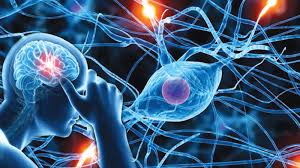The condition of walking on the toe instead of walking on the flat is referred to as toe walking. It is usually common in children below 2 years old. In certain cases, the condition can be seen in adults and considered abnormal. Toe walking in adults can result from an underlying neurological disorder.

Toe Walking in Adults
Toe walking is a normal phenomenon observed in kids below 2 years, where the ball of the foot hits the ground first, bypassing the heel. Children outgrow toe walking with growing age, but if this condition prevails with time then the condition demands attention. The reason can be as simple as a habit, which did not change with time or a pathological cause. In either case, it needs to be diagnosed and treated as soon as possible.
Toe walking is not a fatal problem, but it surely is painful. Toe walking puts extra strain on the calf muscles, making them tight and overworked leading to poor balance. Toe walking causes changes in gait, leading to stress in the hips and knees, potentially causing pain and injury over time. It can also impact the natural alignment of our spine, causing a forward-leaning posture.
Types of Neurological Disorders
Cerebral Palsy
The cerebral is related to the brain, while palsy means weakness or problem with using the muscle. Cerebral Palsy is a condition, affecting a person’s ability to move and maintain balance and posture. It’s the result of abnormal brain development or damage, where a person finds difficulty in controlling his or her muscle action. Muscle stiffness and weakness are common, leading to abnormal walking patterns in an individual.
Multiple Sclerosis
Multiple Sclerosis is a chronic disease where the immune system, meant to protect our body against foreign pathogens, attacks our protective covering of nerves, hindering the communication between the brain and the body, leading to muscle weakness, balance problems, and fatigue. Many people with multiple sclerosis (MS) develop foot drop (sometimes called “drop foot”), a muscle weakness that makes it hard to lift the foot at the ankle and causes trouble walking.
Spinal Cord Injuries
The spinal cord plays a vital role in the human body, it is responsible for sending and receiving signals between the brain and the rest part of the body. Disturbance in these signals impacts the overall coordination of the body. This disturbance can occur from trauma or medical conditions, leading to weakness loss of sensation, or spasticity, resulting in toe walking.
Parkinson’s Disease
Parkison’s disease is a progressive neurological disorder related to the brain, characterized by tremors, stiffness, slowing of movement, and impaired balance. The disease affects the body’s voluntary movements, leading to abnormal walking patterns, including toe walking.
Peripheral Neuropathy
Peripheral Neuropathy is linked to any damage or problem in the peripheral nervous system. There are multiple reasons for its occurrence, but some of the common causes of Peripheral Neuropathy are diabetes, infection, injuries, or exposure to toxins, which results in numbness, tingling, and muscle weakness in the legs, leading to changes in walking patterns, such as toe walking to avoid pain or due to muscle control issues.
Stroke
A stroke impacts motor control, it happens when blood flow to a part of the brain is interrupted, leading to cell death and impaired motor control. Toe walking can occur due to muscle spasticity or imbalance as the brain loses control over the motor.
Diagnosing Toe Walking in Adults
A neurological exam includes a physical examination to identify any sign of disorder related to the brain, spinal cord, and nervous system. The examination helps the medical expert determine which exam to conduct. Depending on the symptoms, these examinations may vary.
For a person suffering from an altered state of consciousness, cognitive decline, blurred or double vision, or balance, your healthcare provider will suggest a specific exam based on the problem to identify whether the symptom is a neurological disorder, or not.
Toe Walking Treatment
There are various ways to treat toe walking depending upon the seriousness of the disease, such as:
Botulinum Toxin Treatment: It’s an injection that helps improve gait in the tight calf muscle.
Orthotic Devices: It help support with proper foot positioning and minimizing toe walking.
Surgical Interventions: In cases of failure of conservative treatments, surgical lengthening of the Achilles tendons is considered.
Physical Therapy: It focuses on the passive stretching of calf muscles.
Footwear Modification: Supportive footwear with a firm heel helps maintain proper foot alignment and reduce toe walking.
Behavioral Interventions: It’s useful in the case of habitual toe walking.
Conclusion
Toe walking can be ignored up to the age of 2 years, but if the condition prevails, it is something to worry about. Toe walking in an adult is uncommon and can indicate the underlying underlying neurological cause. It is a condition linked to brain disorder, but it does have a solution if diagnosed in time. Results from this treatment may vary from person to person depending upon the seriousness, it’s better to seek help from an expert as soon as possible when the condition is diagnosed.
How does toe walking in adults influence the function of bones in the lower extremities?
Toe walking in adults can lead to strain on feet, ankles, and lower legs causing pain and injury over time.
Related Topics:
Components and Functions of Bones in the Bones.